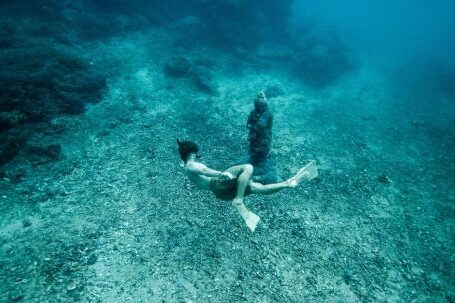Imagine diving into the depths of the ocean, surrounded by the mysteries of the past. Underwater archeology offers a unique opportunity to explore ancient civilizations and uncover hidden treasures that have been lost beneath the waves for centuries. From sunken ships to submerged cities, the richness of underwater archeology is truly captivating.
Unraveling History Beneath the Waves
Underwater archeology is the study of human artifacts and structures that lie beneath the surface of bodies of water. It involves a meticulous process of excavation and documentation, using specialized tools and techniques to carefully preserve and analyze the findings. This field of study provides invaluable insights into the history and culture of civilizations long gone.
Exploring Sunken Ships
One of the most fascinating aspects of underwater archeology is the exploration of sunken ships. Throughout history, countless vessels have met their unfortunate fate at the bottom of the sea. These shipwrecks serve as time capsules, preserving the stories of sailors and merchants who sailed the seas centuries ago.
Each shipwreck has its own unique story to tell. Some may have been lost in storms or battles, while others may have been intentionally sunk to protect their valuable cargo. The wreckage can reveal details about the ship’s construction, trade routes, and the daily lives of those on board.
Unearthing Submerged Cities
In addition to shipwrecks, underwater archeologists also have the opportunity to unearth submerged cities. Ancient civilizations such as Atlantis and Pompeii capture our imaginations, and underwater archeology allows us to explore these lost worlds firsthand.
These underwater cities offer a glimpse into the past, providing insight into the architecture, daily life, and cultural practices of these ancient civilizations. By carefully excavating and documenting the remains, archeologists can piece together the puzzle of these lost cities and gain a greater understanding of our shared human history.
Preserving the Past
Preservation is a crucial aspect of underwater archeology. The underwater environment poses unique challenges, including the corrosive effects of saltwater and the delicate nature of submerged artifacts. Archeologists must employ specialized techniques to ensure the careful preservation of these precious relics.
One such technique is marine conservation, which involves the use of chemical treatments and controlled environments to prevent further deterioration of artifacts. Additionally, the use of advanced imaging technology allows archeologists to create detailed 3D models of underwater sites, preserving them digitally for future generations.
The Future of Underwater Archeology
As technology continues to advance, so does the field of underwater archeology. Remote-operated vehicles (ROVs) equipped with cameras and robotic arms allow archeologists to explore even the deepest parts of the ocean without physically diving. This opens up a world of possibilities for the discovery of new sites and the exploration of previously inaccessible areas.
Furthermore, advancements in underwater imaging technology, such as side-scan sonar and multi-beam echo sounders, provide archeologists with detailed maps of the underwater landscape. This enables them to identify potential sites of interest and plan more targeted excavation efforts.
In Conclusion
Underwater archeology offers a captivating window into the past, allowing us to uncover the richness of ancient civilizations that lie beneath the waves. From sunken ships to submerged cities, each discovery brings us closer to understanding the history and culture of our ancestors. Through careful preservation and the use of advanced technology, archeologists are able to unlock the secrets hidden beneath the ocean’s surface. As the field continues to evolve, the future of underwater archeology promises even more exciting discoveries and fascinating insights into our shared human heritage.





